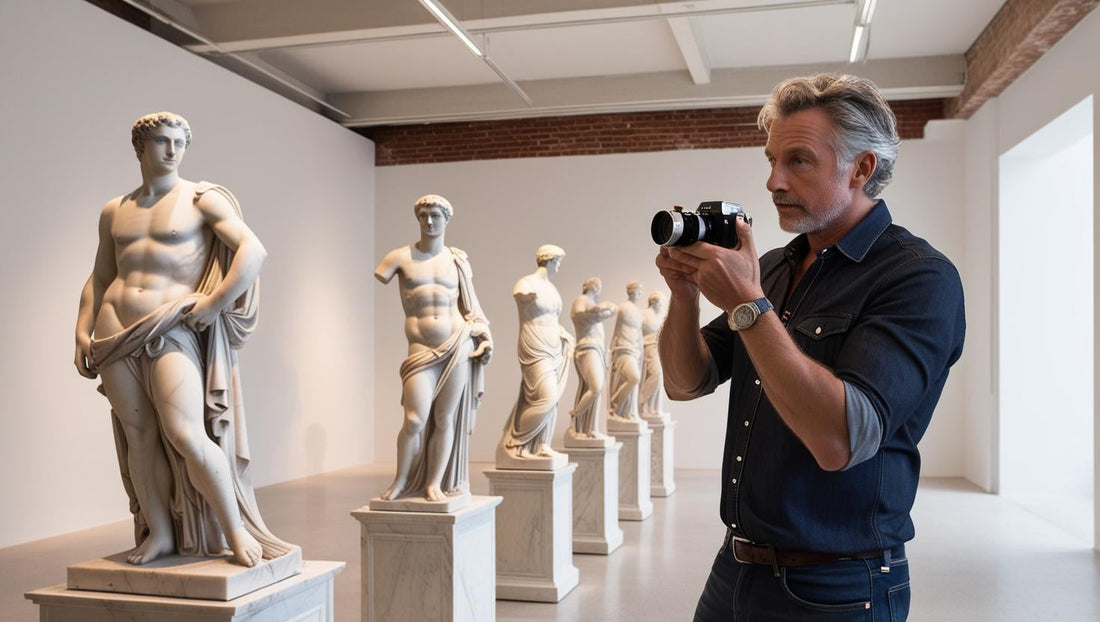
Mastering Photography: Discover the Essential Principles to Get Started
Photography is an art accessible to everyone, but to go from a simple snapshot to a successful image, it's essential to master a few fundamental principles. Whether you're a beginner or an amateur looking to improve, this guide will guide you step by step on your photographic journey.
Mastering basic settings
Obtaining quality images relies on three key exposure parameters :
- Aperture (f/stop) : This regulates the amount of light entering the lens and affects depth of field. A wide aperture (e.g., f/1.8) creates a beautiful blurred background, ideal for portraits, while a small aperture (e.g., f/11 or larger) ensures perfect sharpness for landscapes.
- Shutter speed : This determines how long the sensor is exposed to light. A fast shutter speed (e.g., 1/1000s) freezes motion, making it ideal for sports photography, while a slow shutter speed (e.g., 1/10s) creates a blurred effect.
- ISO sensitivity : This adjusts the sensor's sensitivity to light. A low ISO value (100-200) ensures a sharp image in daylight, while a high ISO value (800 and above) is useful in low light but can generate digital noise.
Take care with composition for impactful photos
Composition is essential to guide the eye and give impact to your photographs . Here are some essential rules:
- The rule of thirds : Divide your image into nine equal parts and place key elements on these lines or at their intersections for natural balance.
- Leading lines : roads, bridges, rivers... use these elements to direct the eye to your main subject.
- Negative space : Leaving space around the subject can reinforce its importance and create a powerful minimalist effect.
- Perspectives and shooting angles : play with high-angle, low-angle or side views to make your shots more dynamic.
Light: the key element of a successful photo
Light determines the mood and quality of your images. Learn how to use it to your advantage:
- Natural light : The golden hours (morning and evening) offer warm, soft hues. Prefer them to the harsh light of midday.
- Artificial lighting : Experiment with lamps, neon lights and flashes to create unique atmospheres.
- Backlighting : Play with this technique to create silhouettes and dramatic effects.
- Reflectors and diffusers : A simple white panel or reflector can enhance your light and soften shadows.
Finding inspiration and choosing your subject
Your subject is the heart of your photography. Capture what inspires and moves you: majestic landscapes, intimate portraits, or subtle details . Change angles, explore new points of view, play with the environment, and tell a story through your artwork . An art exhibition is a great opportunity to share your vision and give meaning to your creations.
A good background enhances the main subject, while a cluttered background can be distracting. Analyze your scene and adjust your framing to highlight the essentials.
Choosing the right equipment
There's no need to invest in expensive equipment right away. A DSLR, mirrorless camera, or even a smartphone with a good camera is enough to get started. Experiment with automatic modes before gradually moving to manual modes (aperture priority, shutter priority, manual mode) to refine your skills.
The importance of post-production
Even a well-taken photo can be enhanced in post-processing. Use editing software to enhance your images:
- Basic adjustments: exposure correction, white balance, sharpness and contrast.
- Advanced retouching: removing imperfections, accentuating details and working on colors.
- Formats and export: Preserve high resolution for printing and compress for the web.
Inspiration and practice: the keys to progress
Inspiration is everywhere: nature , art, travel, everyday life... Observe the world with a keen eye and look for beauty in the details. Experiment, try out different styles, and challenge yourself. Analyzing your own photos will help you progress.
Certain works of art can also fuel your creativity. For example:
Exit 3 , an imposing work (80cm x 80cm), which plays on composition and the strength of contrasts.

Pink Fluid I , an acrylic on A3 paper (29.7 x 42 cm), which combines monoprint and mixed media for an explosion of colors.

These works illustrate the power of composition and color, offering insights to enrich your own photographic vision.
Finally, explore the Horizon World Art online gallery catalog for additional inspiration. Photography is a journey of exploration and learning. Have fun, be patient, and be persistent. With time and practice, you'll create images that reflect your personality and capture the essence of your unique perspective.
